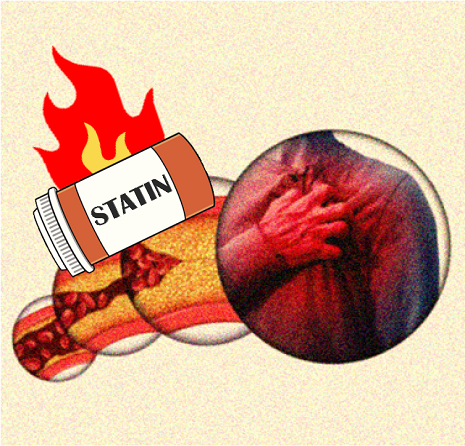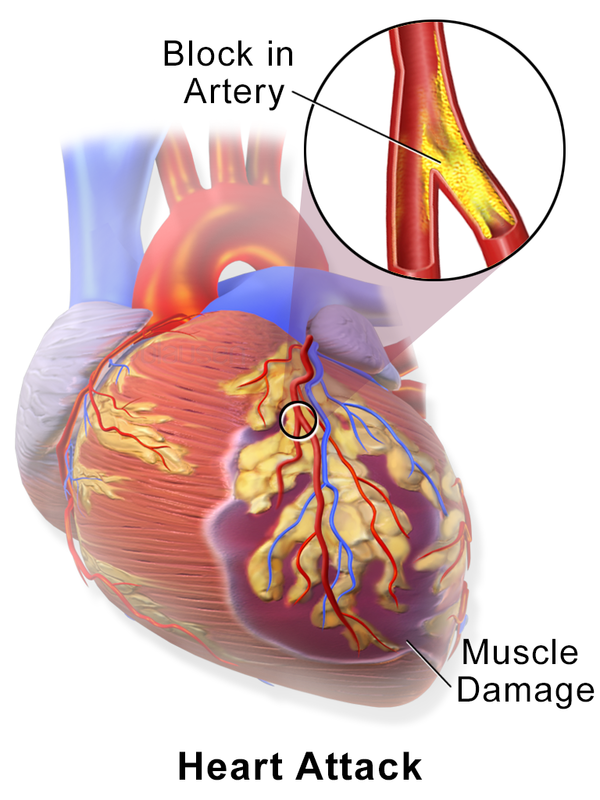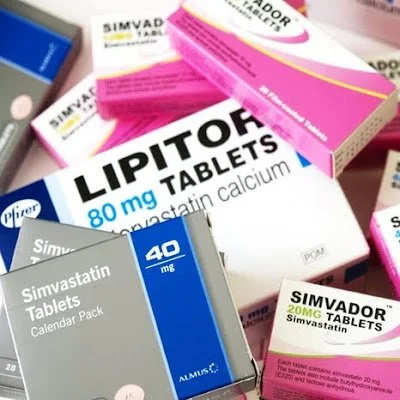Conquer Your Cholesterol Before You’re Stuck on Statins
by Matthew Ajaj
November 13, 2022
Cholesterol is like the monster hiding under the bed: you have heard all the scary stories, you know it’s hiding and lying in wait, but you have no idea what it looks like nor what it would do if it got its hands on you. An enemy cannot be defeated if it cannot even be identified or defined. To beat this boogeyman, it must be exposed for what it is.
Cholesterol is a type of lipid, a class of molecules that serve as essential components in the membranes surrounding our cells. Additionally, cholesterol is a precursor molecule used as a base to form steroid hormones like cortisol and sex hormones like testosterone and estrogen. Thus, cholesterol is necessary for life. But in excess, problems arise. Cholesterol is a key contributor to “atherosclerosis”, the process of plaque buildup inside arteries leading to vessel occlusion. Other atherosclerosis culprits include—but are not limited to—high blood pressure, smoking, and elevated blood sugar.
The two primary concerns with high cholesterol are coronary artery disease (aka “CAD”) and stroke. Coronary artery disease is characterized by accumulation of cholesterol plaques within the aptly named coronary arteries, which provide the heart’s own blood supply. Blood contains oxygen, which is necessary for the energy production that an organ needs to sustain itself; thus, a heart with insufficient blood supply will fail. Lack of blood flow—also known as “ischemia”—triggers pain receptors, and chest pain induced by ischemic coronaries is specifically termed “angina”. However, if one’s coronary arteries are occluded to a significant enough degree, the heart will be so starved of oxygen that the heart muscle will begin to die; this is termed “myocardial infarction”, colloquially known as a heart attack.
Strokes work similarly to heart attacks, except instead of clogged coronaries it involves obstruction of arteries that supply oxygen to your brain. Additionally, while myocardial infarction is almost exclusively a thrombotic process (meaning that the clot forms within a vessel and occludes said vessel), strokes can commonly be thrombotic or embolic. An embolism is a clot that forms in one place in the body, then breaks off and travels through the bloodstream to occlude a vessel in another location. Embolic strokes are most commonly caused by atrial fibrillation, a condition in which the heart beats erratically and thus allows blood to pool and clot within the heart’s chambers; these clots can potentially be pumped out to the brain.
Heart disease is the leading cause of death in the United States, and CAD is the most common type of heart disease and attributes to over half of heart disease deaths. Stroke is also a top five killer. [1] Cholesterol is, of course, a major risk factor for both diseases—and the very best medication management for lowering cholesterol is a statin.
Statins are a class of medication that inhibit the enzyme HMG-CoA reductase, which is involved in the synthesis of cholesterol. Common examples include simvastatin, rosuvastatin, and atorvastatin. They are incredibly effective at lowering LDL (the “bad cholesterol”), and also help increase HDL (the “good cholesterol”) and decrease triglycerides (another lipid that can contribute to atherosclerosis). Although it varies across organizations and offices, the most likely recommendation the average patient will receive regarding their cholesterol is that if they are 40 to 75 years old, have at least one risk factor for cardiovascular disease (e.g., hypertension, smoking, etc.), and have an ASCVD (Atherosclerotic Cardiovascular Disease) 10-year risk score—which utilizes the patient’s cholesterol numbers as a major determining factor—of 7.5-10% or greater, they should be put on a statin.
Like any medication, however, statins have side effects. These include increased risk of developing diabetes and potential liver damage, but by far the most common adverse effect is muscle aches. Many studies cite that these muscle pains only occur in a small minority of patients, but the anecdotal evidence of said side effect is rather palpable; most people probably know someone who is on or was on a statin and experienced muscle aches.
There are many other medications available that can lower cholesterol—including fibrates, bile acid resins, and niacin to name a few—but they unfortunately do not have anywhere near the same effect of statins to make them worthy of first-line consideration in patients with serious heart attack and stroke risks. PCSK9 inhibitors, which are a relatively new drug class that first hit the market in 2015, are the only class of medication that meets and perhaps even exceeds the lipid-lowering effect of statins and seems to have less side effects. However, they are only available to those who have statin intolerance and the high-quality insurance (or stacks of cash) to afford them. Moreover, given their recent introduction to the healthcare landscape, they are overall less proven than statins.
All that said, however, even statins are not the perfect panacea for reducing heart attacks and strokes. A 2022 meta-analysis revealed the following regarding statin efficacy: “[There is an] absolute risk [reduction] of 0.8% (95% CI, 0.4%-1.2%) for all-cause mortality, 1.3% (95% CI, 0.9%-1.7%) for myocardial infarction, and 0.4% (95% CI, 0.2%-0.6%) for stroke in those randomized to treatment with statins, with associated relative risk reductions of 9% (95% CI, 5%-14%), 29% (95% CI, 22%-34%), and 14% (95% CI, 5%-22%) respectively.” [2] What this means is that if, for example, you knew that you had a 4.5% risk of having a heart attack in your lifetime, then appropriate statin therapy would reduce that risk to 3.2%; if you knew that you had a 3.0% risk of having a stroke in your lifetime, then the statin would lower that risk to 2.6%. So as sure as it is that statins save thousands of lives, their overall desired effects are likely not as sizable as one would hope for them to be.
If one does not want to be stuck on statins and hampered with risk factors for heart attacks and strokes, then the best course of action to take is—you already know what I’m going to say—diet and exercise. In nearly all cases, high cholesterol is completely preventable through healthy lifestyle choices. Additionally, if one already happens to have high cholesterol, diet and exercise are still effective in lowering lipid levels.
When looking at nutrition labels, keep an eye out not just for the cholesterol content but also for sugar and saturated fat, which are also major cholesterol-raising culprits. According to the AHA (American Heart Association), added sugars should be limited to a daily amount of about 36 grams in men and 25 grams in women, while saturated fats should consist of no more than 6% of one’s daily calories (which would amount to 120 grams in a 2,000-calorie diet). Moreover, one should be keen of the distinction between saturated fats and unsaturated fats, as the latter are actually healthy and can lower one’s cholesterol. Foods to avoid—like fried foods, carb-heavy snacks, and sugar-addled sweets—are usually rather obvious, but there are some sneakier transgressors as well. Red meat has its merits but can be quite fatty, so it is best not to overindulge; substitute it on occasion for leaner meats like chicken, turkey, and fish. One might also be surprised to see that some yogurts pack enough sweetness to take up one-third or even up to one-half of your daily recommended added sugar, so definitely read the labels before consuming your custards.
In regards to exercise, it was held as common knowledge for years that aerobic exercise is the superior form of fitness for lowering cholesterol, placing an emphasis on endurance-based activities like walking, jogging, yoga, and swimming. However, newer studies have begun to show that weight/resistance-training offers similar and perhaps even better cholesterol-lowering benefits and overall cardiovascular risk reduction. [2] [3] So either way, you really cannot go wrong.
Lastly, if diet and exercise are insufficient or unattainable, there are multiple supplemental options available to counteract rising cholesterol. Fish oil (omega-3), red yeast rice, and garlic are some of the most popular of these supplements, and while studies show varying levels of success among them, there is plenty of evidence available that affirm the merit of each in improving cardiovascular health to some degree. [4] [5]
Cholesterol is an accomplice to hundreds of thousands of fatal heart attacks and strokes in the United States every year. Fortunately, for nearly all patients having high cholesterol is a choice. Healthy eating and exercise habits can keep cholesterol at bay, and affordable supplements offer extra protection. Once cholesterol is elevated to a significant enough level, statins are available to stunt it, but they are often poorly tolerated and only decrease risk of fatal high cholesterol complications to a moderate degree that most patients probably would not consider satisfactory.
All in all, it is not ideal to end up stuck on statins. Like all too many medical malefactors, the key to conquering your cholesterol is getting one step ahead of it through appropriate lifestyle changes.
* * *
Citations
[1] FASTSTATS - Leading Causes of Death. Centers for Disease Control and Prevention. https://www.cdc.gov/nchs/fastats/leading-causes-of-death.htm. Published September 6, 2022. Accessed November 13, 2022.
[2] Liu Y, Lee DC, Li Y, et al. Associations of Resistance Exercise with Cardiovascular Disease Morbidity and Mortality. Med Sci Sports Exerc. 2019;51(3):499-508. doi:10.1249/MSS.0000000000001822
[3] Christensen RH, Wedell-Neergaard AS, Lehrskov LL, et al. Effect of Aerobic and Resistance Exercise on Cardiac Adipose Tissues: Secondary Analyses From a Randomized Clinical Trial [published correction appears in JAMA Cardiol. 2019 Aug 1;4(8):833]. JAMA Cardiol. 2019;4(8):778-787. doi:10.1001/jamacardio.2019.2074
[4] Ong HT, Cheah JS. Chinese Medical Journal. 2008; 121 (16): 1588-1594.
[5] Ried K. Garlic Lowers Blood Pressure in Hypertensive Individuals, Regulates Serum Cholesterol, and Stimulates Immunity: An Updated Meta-analysis and Review. J Nutr. 2016;146(2):389S-396S. doi:10.3945/jn.114.202192





